QuestionThis morning although tied up and still learning barn rules, Buddy my 4 month old boxer/boarder collie mix puppy got into the stall with one of my horses. the horse not knowing what to do stepped on him accidently. Puppy was screaming and biting me but I had gloves on. I have applied ice and have a vet appt on sat. He puts paw down but is still limping, Is there anything I can do to make him more comfortable?
AnswerHi Pam!As for the limping,then rest him.Try and confine the dog to a small padded area inside except to potty outside. Many orthopedic problems (other than fractures) heal with time. If the dog is in severe pain, then you may have to take him to a vet for some pain relief.You should also keep him on soft surfaces.
As for the biting,you could put a muzzle on him.It's natural for animals to lash out.To protect yourself,wrap your pet's mouth closed before treating the wound.You could get pretty seriously hurt otherwise.You can improvise by wrapping gauze,panty hose or a length of rope or twine several t imes around your pet's mouth.Then pull the ends back and tie them behind his ears.Be careful not to cover the nostrils.And if your pet starts to get sick or is having trouble breathing,remove the muzzle immediately.
if your dog is tooo small to wear a muzzle,you can protect yourself by wrapping her head with a towel before starting treatment.Don't leave too long or wrap it too tightly,however,because it could cut off her air supply.
Trimming the hair fro around a bite makes it easier to clean.It will also help the bite heal faster by improving air flow to the area.Clip the hair short with sicissors or electric clippers.Or use a disposable razor.
To prevent hair from falling into the wound,some vets recommend smearing on a thin layer of watersoluble jelly such as K_Y Jelly.Cut hairs will be trapped by the jelly,which can then be washed away.
To prevent infection,it's important to clean all the bites thoroughly.Flush for at least five minuts with lukewarm running water.If the bite is more than 24 hours old,however,bacteria may already have taken hold.In that case it's best to scrub it well with an antibacterial soap such as Bedadine Skin Cleanser and then flush it with running water.
After washing and drying the bite,apply an over-the-counter triple antibiotic ointment such as Neosporin.Then bandage the area with gauze or a clean cloth.You can hold the bandage in place with clear first-aid tape.
When applying and taping a bandage to a wound,leave enough room to sneak a finger underneath.Anything tighter could interfere with your pet's circulation
Once the bandage is removed,it's natural for animals to lick their wounds.In most cases this isn't a problem.In fact,licking may help speed the healing process by keeping the area clean.
If your pet is worring a wound excessively,your vet may recommend fitting her with an Elizabethan collar.These are conical plastic shells that slip over the pet's head and prevent her from reaching the wound.Elizabethan collars are sold in pet stores,or you can make your own from a plastic bucket by cuitting a hole just big enough to go over your pet's head.Be sure that the collar isn't to tight,however,and that it doesn't prevent from eating normally or getting comfortable.
Rabiezs is a viral disease that,without treatment,is almost always fatal-to pets and to people.In most areas rabies vaccinations are required by law.Be sure to keep your pet's vaccinations current.
Thanks to vaccinations,rabies in this country is rare in dogs and cats.Amoung wild animals,however,the deadly virus is still very much at large.The raccon is perhaps the most culprit.In one year in New York,for example,racoons were responsible for approximately 81 percent of all rabies cases.But rabies is also found in skunks,foxes,bats and other carnivores.Don't make friends with any wild animal.Suspect the worst if a wild critter allows you to get close without running away.This isn't natural behavior and could be a sign that it's infected.
I hope this helps!Nicole.D.
Follow up-
You can also splint the leg to keep it from moving.

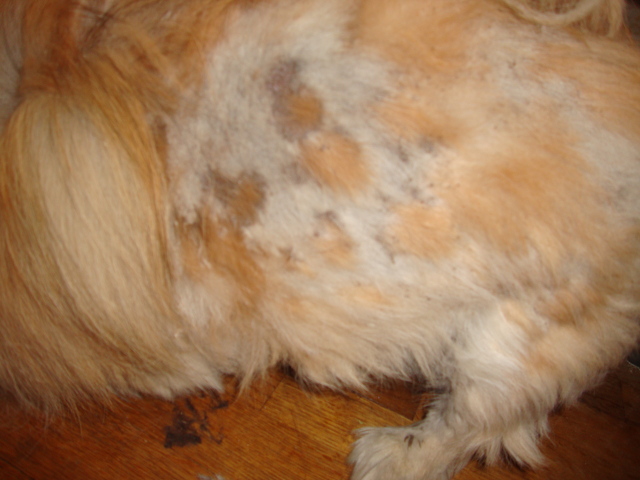 pekingese skin problems
Question
1 i have 4 more pic i
i was wonerin wat my ad
pekingese skin problems
Question
1 i have 4 more pic i
i was wonerin wat my ad
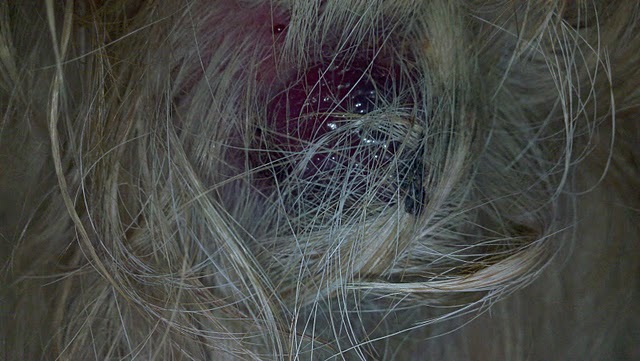 Our Golded Retriever named Skye
Question
skye tail
my beloved dog skye is about
Our Golded Retriever named Skye
Question
skye tail
my beloved dog skye is about
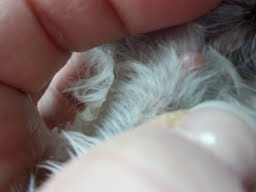 Small growth my dogs face
Question
growth photo 2 growth photo 3
Hi.
Small growth my dogs face
Question
growth photo 2 growth photo 3
Hi.
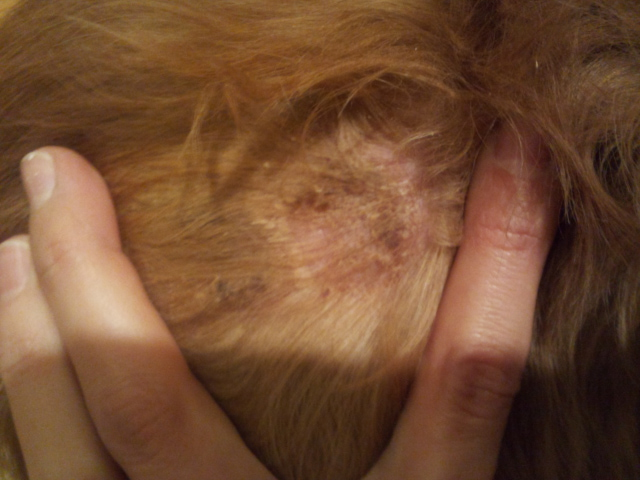 Sores on body
QuestionSore
QUESTION: Do you have any idea what
Sores on body
QuestionSore
QUESTION: Do you have any idea what
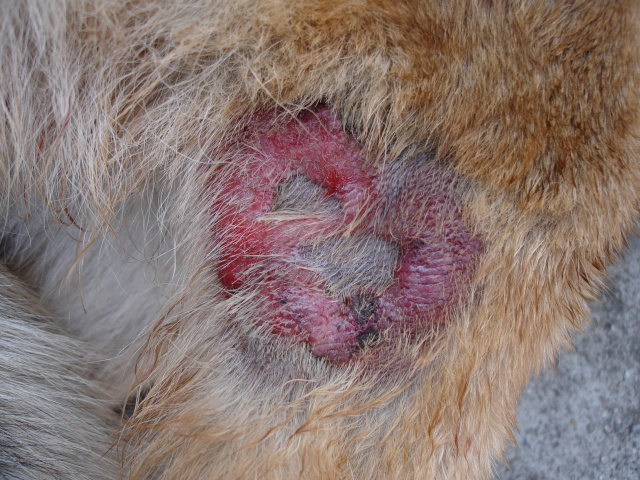 Infection in German Shepherd
Question
Infection 1
My German Shepherd named Lucy is s
Infection in German Shepherd
Question
Infection 1
My German Shepherd named Lucy is s